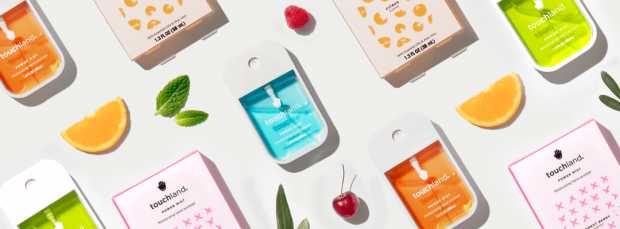Touchland on How BNPL Options Help Improve Consumer Insights, Boost Sales During Downturns

Amid rising costs and product shortages, consumers are buying in bulk to ensure they’re not left short of basic household supplies. In the latest Buy Now, Pay Later Tracker, Ned MacPherson, growth and consumer analytics lead for Touchland hand sanitizer, discusses how BNPL plans help manage spend when consumers stock up.
The retail space transformed as consumers changed how they interacted with merchants and paid for their purchases during the pandemic. Some businesses fared better than others — hand sanitizer brands were positioned especially well to flourish, particularly if the business already had an online presence, as consumers sought to fight germs and ward off infection.
Such was the case for Touchland, an online company that provides premium hand sanitizer in colorful dispensers for both consumers and businesses. According to Ned MacPherson, the company’s growth and consumer analytics lead, Touchland experienced more than 1,000% growth due to the pandemic. The highest sales volumes are in the Los Angeles and New York City designated market areas (DMA), though sales have increased throughout the country.
A partnership with buy now pay later (BNPL) provider Afterpay provided an added boost to Touchland’s performance, allowing customers to opt into paying for their purchases over time in four installments without interest. A Touchland KUB starter package retails for $249, for example, yet a customer can pay for the purchase in four installments of $62.25 by using Afterpay.
In the tough economic crunch of the pandemic, some customers may find it easier to space out the cost of large purchases rather than charging them on a high-interest credit card.
The Value of Convenience and Connection With Customers
According to MacPherson, customers generally pay for Touchland’s sanitation products in traditional ways, such as with credit and debit, and through growing account-to-account options. While these payment methods have mostly stayed consistent throughout the pandemic, MacPherson said larger orders make the Afterpay option attractive to customers.
“Customers almost entirely pay via our website using our native Shopify checkout or express payment options such as PayPal and Apple Pay,” he said. “We’ve recently introduced Afterpay for larger volume orders, and it’s slowly getting traction.”
He said the BNPL partnership has positively affected business, leading to a slight increase in sales volume.
“We’ve seen some adoption thus far, but given that our average order values (AOVs) are on the lower end, it only accounts for a few percentage points of sales,” MacPherson said. “We did see a minor AOV uptick with the introduction of Afterpay, which is a great leading indicator.”
Leveraging BNPL services also helpfully allows merchants to get a real-time view of what customers will pay for, allowing them to adjust their product offerings as needed to meet consumer demand.
“We have not seen an increase yet in conversion rate from the inclusion of Afterpay, but as we roll out more expensive bundles, we predict we’ll see such lifts,” he said. “Services like Afterpay have a direct relationship between customer adoption and AOV.”
A Partnership Designed To Drive Future Sales
Afterpay partners with nearly 100,000 retailers worldwide and offers a store directory on its website that can refer customers directly to merchant websites that offer the service. According to Zahir Khoja, general manager of North America for Afterpay, this service provides up to one million referrals a day.
“As brands roll out higher-priced bundles or products, BNPL services become more enticing,” he said. “Similarly, these services drive net new traffic given the on-site database features they have, promoting their client brands.”
MacPherson said BNPL options would continue to make a difference in the future of the retail industry, even after the pandemic is over.
“[BNPL will make a difference] specifically for higher-priced items. For lower cost, more commodity items, it may not be as adopted, however, [as] with any bundling strategy, BNPL services provide a value-add to the customer,” he said.
With the upcoming holiday season, Touchland has made business projections in line with customer spending, and customers may find that using BNPL could help them save on large holiday purchases without loading on more debt.
“We’re projecting a heavier usage of Afterpay during the holiday period, specifically due to larger basket orders [and thus higher AOV],” MacPherson said, adding that the company is projecting that approximately 4% of holiday orders will use Afterpay.
MacPherson said he expects the future of BNPL services to be bright and that more solutions will become available to help companies reach and support their customers.
“Nearly all direct-to-customer brands will be introducing or promoting some form of BNPL in the near future, and it’s a safe, reliable and effective way to pay for those purchases that put pressure on one’s individual or household budget,” he said.
